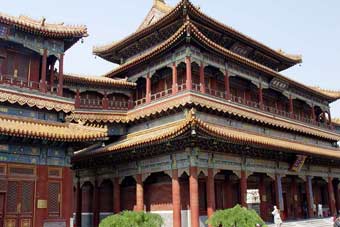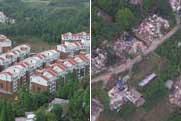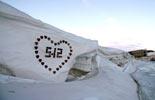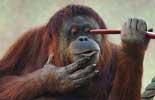China
Yonghegong Lama Temple proves Tibet is part of China
WATCH VIDEO
Source: CCTV.com | 04-16-2008 13:49
Special Report: 3.14 Tibet RiotsThe Yonghegong Lama Temple in Beijing is one of the largest and most important Tibetan Buddhist monasteries in China. Its over 260 year history as a Lama temple further proves that Tibet has always been a part of China.
 |
| The Yonghegong Lama Temple in Beijing is one of the largest and most important Tibetan Buddhist monasteries in China. |
The Yonghegong was built in 1694 during the Qing Dynasty. It originally served as an official residence for royal families, but was changed into a Lama Temple during the Emperor QianLong's reign.
Since then, Yonghegong became the center of Tibetan Buddhism in Beijing.
In order to express appreciation to Emperor Qianlong, the Seventh Dalai Lama spent three years transporting a huge piece of white sandalwood from Nepal to Beijing, and carved it into this 26-meter tall Maitreya Buddha.
Around this Maitreya Buddha, there are many small Buddhist images, which symbolize longevity. They are also tangkas, banners painted with mainly Buddhist figures as gifts from the Seventh Dalai Lama.
Losang, vice-Abbot of Yonghegong Lama Temple, said, "These tangkas with Buddhist images are very precious, they are all part of history. The Seventh Dalai Lama made greetings on each of these as well as his fingerprints."
It was basic state policy during the Qing Dynasty that the central government should support Tibetan Buddhists.
The regulations of reincarnations of living Buddhas was written on this stone tablet in the four different languages of Han, Tibetan, Manchu and Mongolian. The Han characters were written by Emperor Qianlong.
Losang said, "This tablet states the reasons for changing the royal families' residence into the temple. At the age of 82, Emperor Qianlong issued the Golden Urns System for reincarnations of living Buddhas, which means searching for reincarnated souls in boys, and one is chosen by drawing lots from a gold urn. The boy will then be enthroned after approval from the central government. The system was thought to be very scientific."
Emperor Qianlong participated in the design of the two urns, of them one was placed in the Yonghegong Lama Temple and the other in the Jokhang Temple in Lhasa. The Golden Urns System continued to be used from then on.
The 14th Dalai Lama came to Yonghegong in 1954 to give lectures on Buddhist Scripture and Wisdom.
The over 200 year-old Lama temple shows the history of Tibetan Buddhists.
Editor:Zhang Ning



